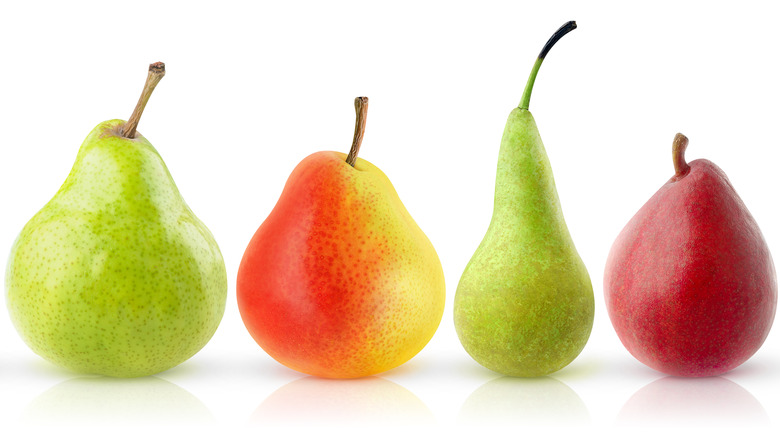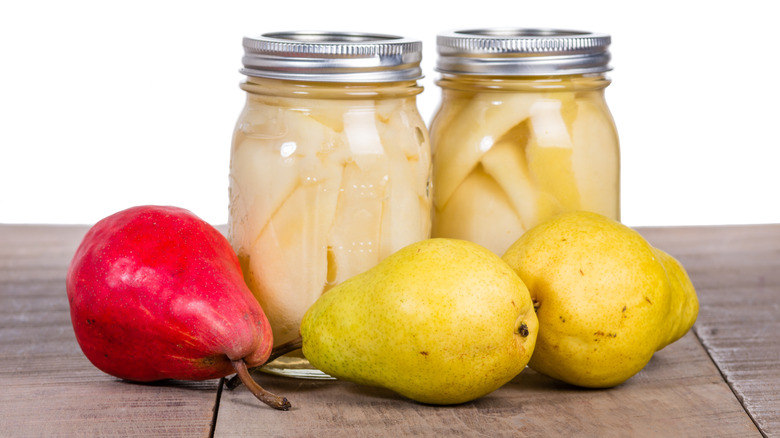How To Pick The Best Pears For Canning
First cultivated thousands of years ago, there are more than 3,000 varieties of pears around the world. A great source of fiber and vitamin C, the pear is a versatile fruit that can be enjoyed in many ways. They're delicious on their own, stirred into yogurt and oatmeal, sliced or shaved in a salad, melted into a grilled cheese, baked into a bread, pie, or cake, or poached and enjoyed as dessert.
Depending on the type, pears can last anywhere from a few days once ripe to a few months under cold storage if unripe. Now that canning at home has become widely accessible, it is a great option for preserving pears. But keep in mind that certain varieties of pears work better than others for canning: Bartletts are generally considered the best type, since they are relatively firm yet soft enough that their texture won't be affected much by the canning process; Orcas and El Dorados are common types for canning; and Bosc, Anjou, Comice, and Seckel also work well. Asian pears can also be preserved, but note that they need to have acid added to be safe for canning.
The importance of ripeness
You want around the same ripeness of pears for canning as you would for eating or cooking, not too mushy but not too hard either. Avoid pears that are too ripe, as they are more likely to turn mushy. They also contain less acid and are more likely to float out of the canning syrup, leading to unappealing discoloration.
Pears are picked from the tree unripe, since they will turn mealy or gritty if left on the tree to ripen. Which means they may not be ready to can on the day you bring them home from the grocery store. You want to avoid storing pears in the refrigerator before they are ripe as the cold can affect the ripening process and negatively impact both flavor and texture. Leave pears on the counter instead. It can take a few days to a few weeks. To speed up the process, you can put pears in a paper bag, so the ethylene gas they release can help ripen the fruit faster. An easy way to check if a pear is ripe is to feel the neck — if it feels tender, it's ripe. Once the pears are just about ripe, go ahead and can them to enjoy later.

